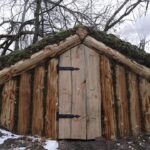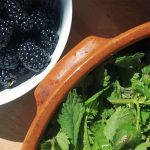How To Forage For Edible Plants
Hey, I’m Josh Clark, and this is BrainStuff. And this the BrainStuff where I talk to you about survival foraging. So I have bad news everybody. America, and pretty much the rest of humanity, has turned its back on our hunter/gatherer roots. Luckily some people have guarded this ancient wisdom and kept it alive and can pass it along. I am not one of those people. I’m just a host. And for legal reasons, you should not listen to anything I say from this point forward. But there are some things that even a schmo like me – just a host, just a host – can teach you about survival foraging. To start, you always want to wear gloves when you forage to protect yourself from plants like poison ivy and things like that. And you always want to be on the lookout for snakes and insects that want to kill you. Always be alert. And then last but not least, make sure everything that you pick, you take home and wash first. Unless, of course, civilization has collapsed and you’re slowly rebuilding it and there’s no water. When you’re out there hiking around the wilderness with your professional foraging guide who is not me, you are going to learn the number one rule of thumb. And it is as follows: if you don’t 100% recognize a plant as edible, don’t eat it. So let’s say that you’ve gone out, you’re on your first foraging hike, you know a little bit, there’s a legally binding expert there with you. The first thing you’re going to try to do is find an edible, universally identifiable, plant. And even once you say, “This plant is totally fine, I could eat it, It’s harmless,” you have to find out if it’s harmless to you first, because you still might be allergic. There’s a three-step test that you can put a plant through to make sure that it’s okay for you to eat (after you’ve identified it as edible). Step 1: take a little piece of the plant, pull your glove down (remember gloves), pull your shirt up. And just rub a little bit on your forearm. Wait a couple minutes and see if your skin reacts in any way. If not, you can move on to step 2. Step 2 is taking another little piece of the plant and rubbing it lightly on your lips. Which feels weird. But wait a little bit and if they don’t turn into balloon animals, then you can move on to step 3. Step 3 is eating a little bit of the plant and waiting a little bit. Are you alive still? Okay. If you’ve identified the plant as edible and it’s passed the allergy test, you are probably in the clear. A couple of other pointers that you will learn eventually from your wilderness guide is to always know which parts of the plant you can eat and can’t. Because some plants have poisonous leaves and, say, edible stems. Some plants are poisonous at different stages of maturation. And, while you actually can forage just about anywhere (including cities), there are some places you’re going to want to avoid like the plague. For example: roadsides, or industrial parks, or even farms. Because these places use lots of chemicals and you don’t want that in your foraged food. But when you do get your hands on a really luscious, delightful foraged plant? Brother, you are in for a treat because foraged plants tend to have more fiber, more nutrients like phytonutrients and antioxidants, and they’re usually more flavorful than their agricultural counterparts. So now that you’re ready to go out there and get started and learn, learn, learn about survival foraging, go dip your feet in the water. And maybe start, after you learn from somebody else, on things like dandelions or chickweed. Universally edible plants. And while you’re at it, let us know how your progress is going on survival foraging down there in the comments below. And while you’re there, subscribe. And for all sorts of great stuff, go to HowStuffWorks.



